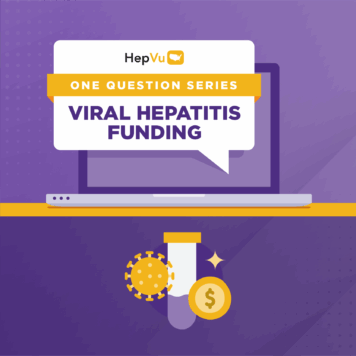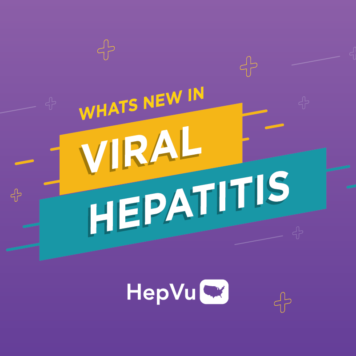Richard Haverkate, MPH, is the National HIV/HCV Program Coordinator for the Indian Health Service.
Q: In July 2020, you co-authored a study that analyzed trends in indicators of injection drug use (IDU) using data from the Indian Health Service inpatient and outpatient database from 2010-2014. What specific indicators did you select as proxies for injection drug use, and why?
The health system supported by the Indian Health Service (IHS) consists of 45 hospitals and more than 300 health centers located in 37 states for American Indians and Alaska Natives. However, not all persons who identify as American Indian or Alaska Native use IHS-funded health care; 5.2 million adults and children in the U.S. self-identified as Native in the 2010 census but only 1.2 million people were represented in our analysis.
We worked with the Centers for Disease Control and Prevention (CDC) to find a set of indicators using Intentional Classification of Disease-10 codes. Since injecting drug use does not have a specific standardized code, and medical notes are not reported to headquarters, we had to use pertinent codes as ‘best available’ indicators. We used some general codes to capture injection site infections like cellulitis, a bacterial skin infection, and upper arm abscess, a collection of pus under the skin, and some specific ones that are a more direct indicator of injecting drug use, such as opioid use disorder and overdose. While these data definitions have limitations, they were deemed adequate to track trends over time and get an idea of the Hepatitis C burden in this population.
Q: What important trends did your analysis uncover and how should this information be used to improve public health efforts serving American Indian and Alaskan Native communities?
The most important trend was that Indian Country, like the rest of the nation, is experiencing an increase in injection drug use. The analysis showed an increase was about 10% per year among 18-to-35-year-olds during the study period. We also found that about a quarter of persons with a Hepatitis C diagnosis also had an opioid use disorder diagnosis.
While these are broad findings, they were actionable and encouraged our HIV and Hepatitis C programs to keep expanding prevention efforts and clinical capacity across the syndemic of drug use, HIV, and Hepatitis C. First and foremost, these data help our regions and tribal partners understand this syndemic’s scope and direction. In turn, this understanding can help prioritize interventions for prevention and harm reduction, such as syringe service programs and other interventions that federal entities generally cannot provide, except under certain circumstances.
On the medical side, IHS facilities are mostly rural primary care clinics and the only ones available for the community. In some ways, this helps IHS excel at preventive care, as we are the medical home for the immediate area. We can see this in our nationally standardized HIV and Hepatitis C screening indicators. These indicators show the screening coverage we’ve achieved for Hepatitis C screening of our Baby Boomers, for example. Screening coverage among Baby Boomers has shown a rapid increase in a few short years, in part because our electronic systems and testing policies can be shared widely among our facilities and are relatively easy to integrate. It is worth noting that IHS issued guidelines for expanded Hepatitis C screening of adults several months before CDC and United States Preventive Services Taskforce (USPSTF). These new guidelines for expanded Hepatitis C screening have resulted in an increase in Hepatitis C screening outside of the cohort. IHS can also provide primary care for our patients as well.
On the other hand, we are understaffed, which is a challenge shared by most rural health networks, and we have only a few specialists. This understaffing can mean patients will have to make lengthy and repeated trips for treatment to specialists far from their community, so IHS needs to be able to link to care locally to the extent possible.
So that was the main challenge – how to provide care that traditionally came from specialists. It wasn’t realistic to simply refer all our patients out. So, to improve and extend clinical capacity on injection drug use, HIV, and Hepatitis C, we’ve significantly relied on telehealth to link our clinicians to specialists. Telehealth, using the Extensions for Community Healthcare Outcomes, or ECHO, model – a ‘one-to-many’ model – has allowed us to have nationwide reach with telehealth clinics on pain management, medication-assisted therapy, Hepatitis C, and HIV. In terms of demand, Hepatitis C incurs the most significant clinical need. Via tribal and academic partnerships, we provide six Hepatitis C teleECHOs per month, and we’ve been able to see the impact. In a regional study, we found that about only half the facilities participated in a Hepatitis C ECHO, but they accounted for over 90% of all Hepatitis C direct-acting antiviral prescriptions. In medication-assisted therapy, HIV, and especially in Hepatitis C, clinical pharmacists have often taken a leadership role in delivering services.
Addressing drug use continues to be a challenge. Our behavioral health programs and medication-assisted therapy services expand capacity as best as possible to reduce overdose deaths and risky behavior. Tribes also bring their specific expertise, such as the incredible didgʷálič program, owned and operated by the Swinomish Indian Tribal Community in Washington State, that addresses all aspects of recovery to deliver services in a setting attuned to tribal culture and history.
It is worth noting that since IHS spans so many states, we can see how both federal and state policies impact service delivery. For medical services that we can bring to bear against the syndemic, policy complexities can be as challenging as the clinical aspects. Opioid substitution therapy, pre-exposure prophylaxis for HIV – also known as PrEP, and Hepatitis C treatment are foundational interventions for eliminating HIV and Hepatitis C. These services can and should be delivered at the primary care level when the patient’s Hepatitis C case is not complicated.
Between ECHO and similar specialist support via a teleconsultation agreement with the Clinical Consultation Center at the University of California at San Francisco, we can generally get our clinicians access to any specialist’s input they need to treat patients locally. These services are ‘on-demand’ and clinicians can use either option. ECHO is the preferred option as it has an instructional element, but scheduling constraints make teleconsultations an essential ancillary option. However, there are extensive licensure requirements for medication-assisted therapy. Hepatitis C medication eligibility requirements from public and private insurers, such as Medicaid, have had a measurable impact on our Hepatitis C treatment volume, although these policies have generally gotten less restrictive in recent years.
We have high hopes that the national Ready Set, PrEP program will ensure access to that option. While IHS can provide HIV and Hepatitis C drugs to patients at no charge, the agency is a payor of last resort, and we must seek third-party payment from private or public insurance before pulling from our local pharmacy budgets.
Q: Historically, case reporting for viral hepatitis is often incomplete due to varying state laws, resources, and infrastructure. Can you explain the data surveillance challenges in tracking Hepatitis C in American Indian/Alaska Native communities?
Reporting has gotten more comprehensive as treatments have simplified to the point that we can do them in-house rather than refer to outside specialists. Although our screening coverage has increased, we have less visibility into the cascade’s next steps – ensuring that persons with Hepatitis C were initiated on treatment, if they completed treatment, and whether they achieved sustained virologic response, which means that the Hepatitis C virus is not detected in the blood. To get this level of granularity, we must review data at the local level.
We have strong tribal programs independent of IHS reporting that have monitored large care cascades nationally. The Alaska Native Tribal Health Consortium has an exceptional treatment program that serves all Alaska Natives for Hepatitis C based out of Anchorage. Cherokee Nation Health Services has an exemplary program on expanded screening, treatment, and successful treatment of active drug users. The single specialist there leads a regional ECHO team that allows them to multiply the pool of clinicians treating Hepatitis C extensively. Rather than being referred to a single specialist for treatment, Cherokee Nation treats Hepatitis C in almost every facility throughout a large region of northeast Oklahoma.
Q: How has the COVID-19 pandemic impacted your work on HIV and viral hepatitis, and have there been any new opportunities in reaching the American Indian and Alaska Native community?
Because of COVID-19’s priority status, most of our HIV and Hepatitis C providers use their infectious disease experience to respond to the new pandemic. We have seen our HIV and Hepatitis C ECHOs start to come back after a short hiatus, but they are not yet at their pre-COVID levels. Also, COVID-19 has impacted PrEP services.
We will see the new opportunities the pandemic brings in outreach. Telehealth and telemedicine have become much more embraced by providers and patients, and with the support of federal policies, many of the useful elements of remote care may persist. However, Indian Country has a longstanding digital divide that remote care cannot address. Post-COVID-19, we will need to use expertise within our communities, face to face, wherever possible. So, while the technological options are welcome, we have to ensure our non-connected population is not left behind. This means more programs with community health workers to help with all aspects of the syndemic response, from community education, reducing stigma, learning about available treatment options, and in some settings, even extending the availability of case management.
Q: Given that there are so few studies and data on viral hepatitis in the American Indian and Alaska Native community, what message would you like to share with other public health stakeholders to amplify the health needs of Native communities?
First, data on race and ethnicity matter. Assuming someone is non-Native or otherwise, leads to systemic misclassification of American Indians and Alaska Natives in health databases, including Hepatitis C.
Second, there are success stories out of Indian Country to learn from, such as using clinical pharmacists as Hepatitis C service leaders and culturally specific strategies and platforms. The community should look for opportunities to learn and collaborate as peers.
Finally, the emphasis on disparities in American Indian and Alaska Native health outcomes is understandable. However, we must remember that there are not only historical considerations but also recent underlying factors contributing to this disparity. For example, the IHS budget for tribal healthcare in one year per patient is only about half the national average. Despite the federal government highlighting the American Indian and Alaska Native population as a priority population for Hepatitis C response, the designation did not come with any resources for the community. We need to dedicate resources to support HIV and Hepatitis C services with the Native communities to continue the screening and patient care.




